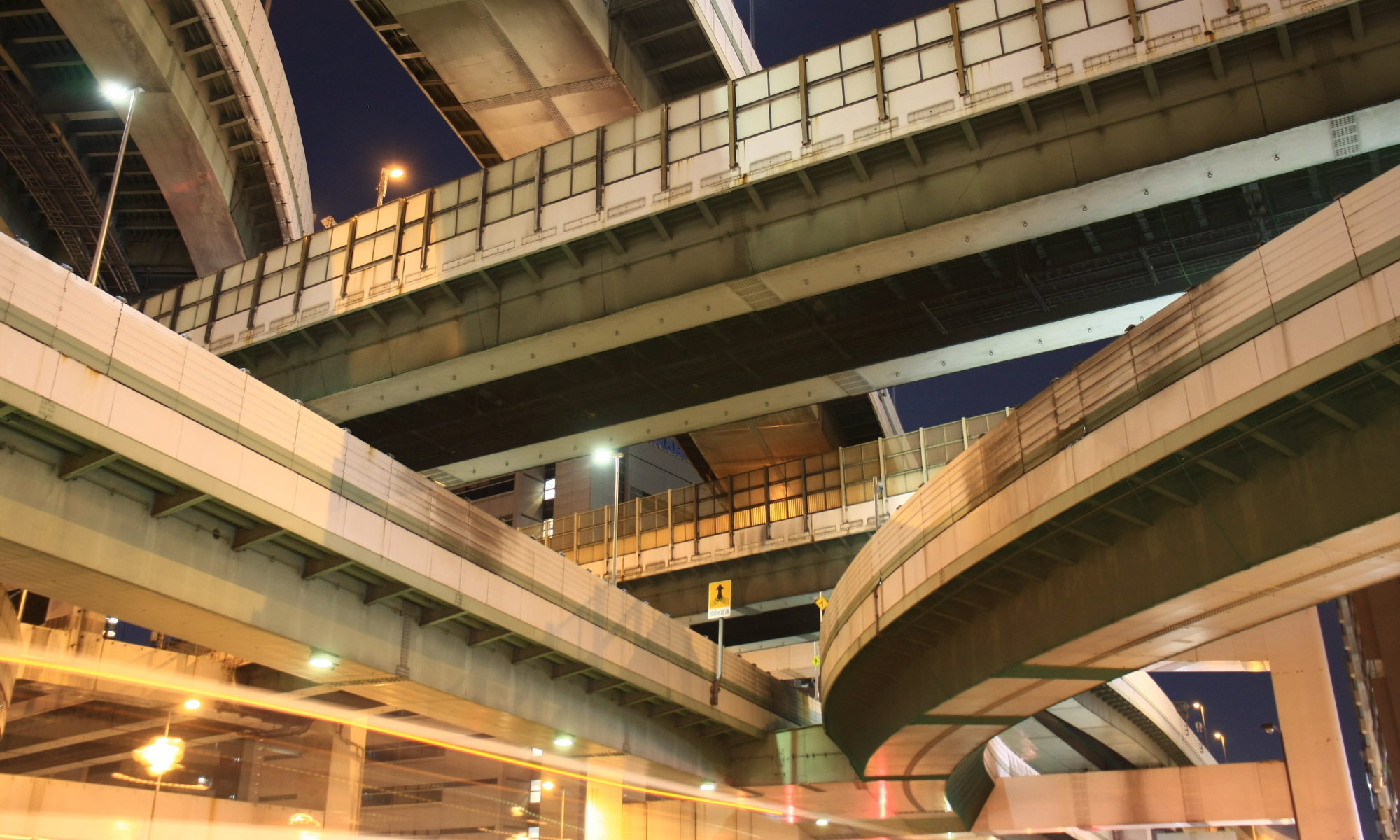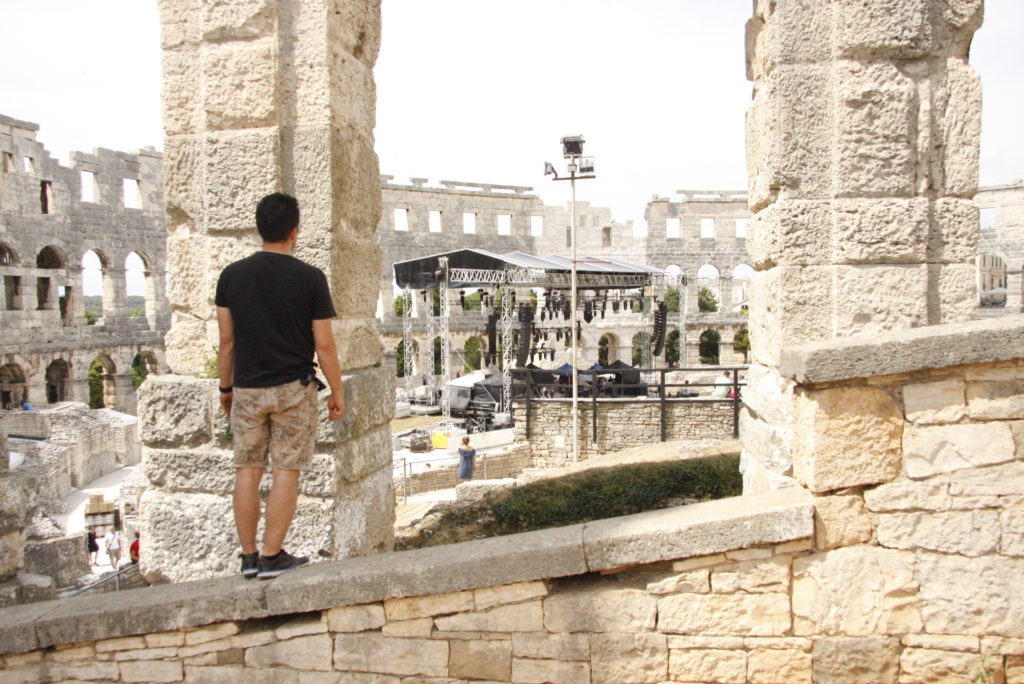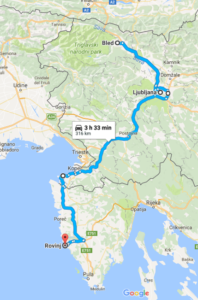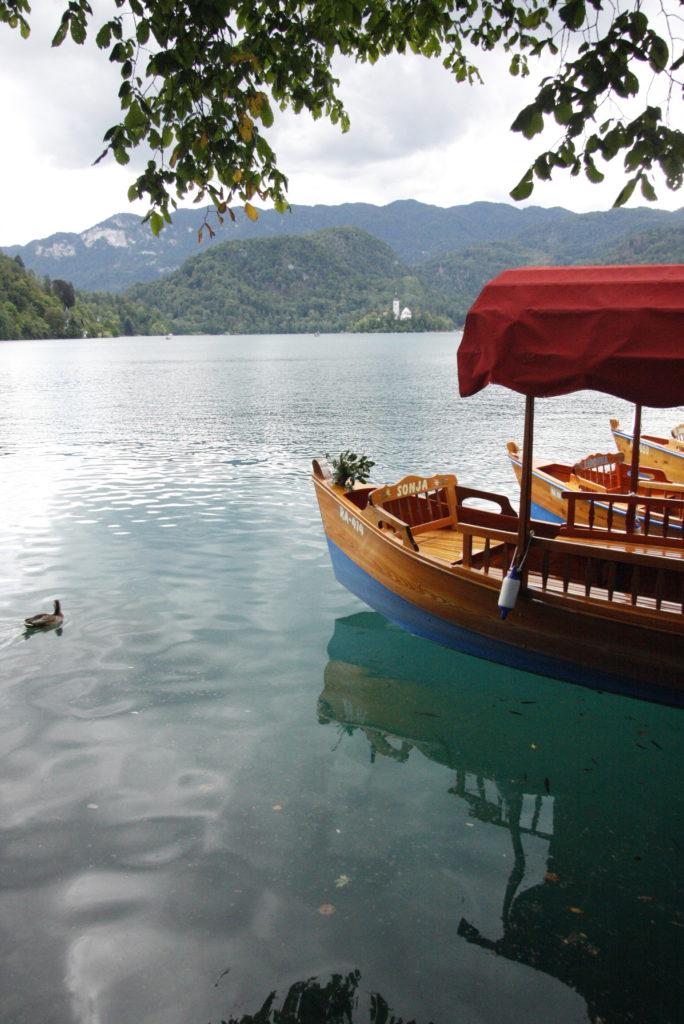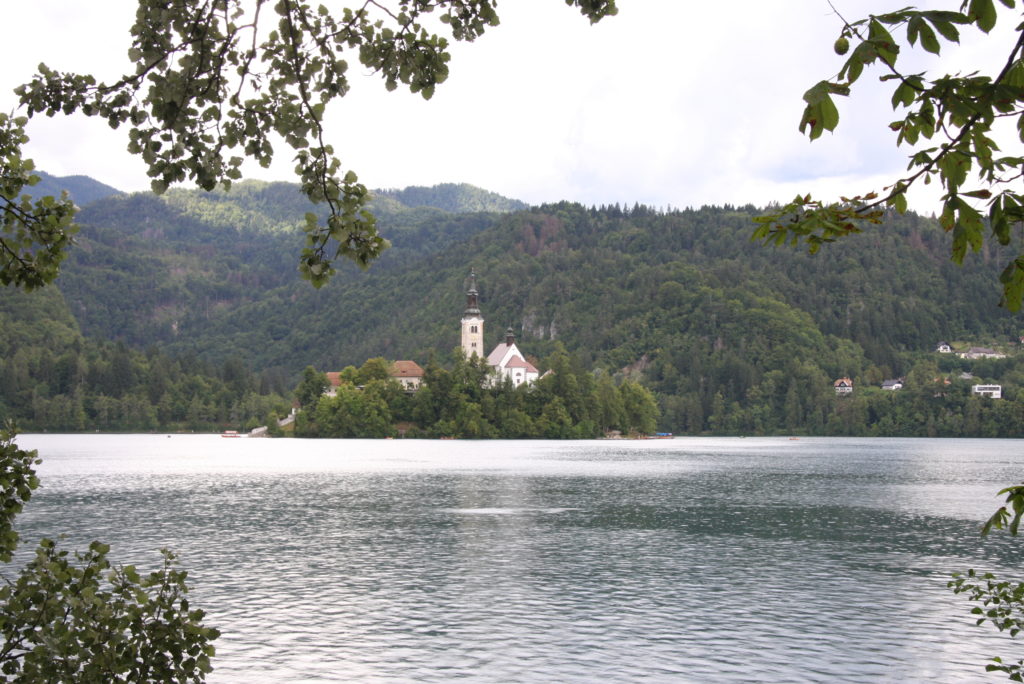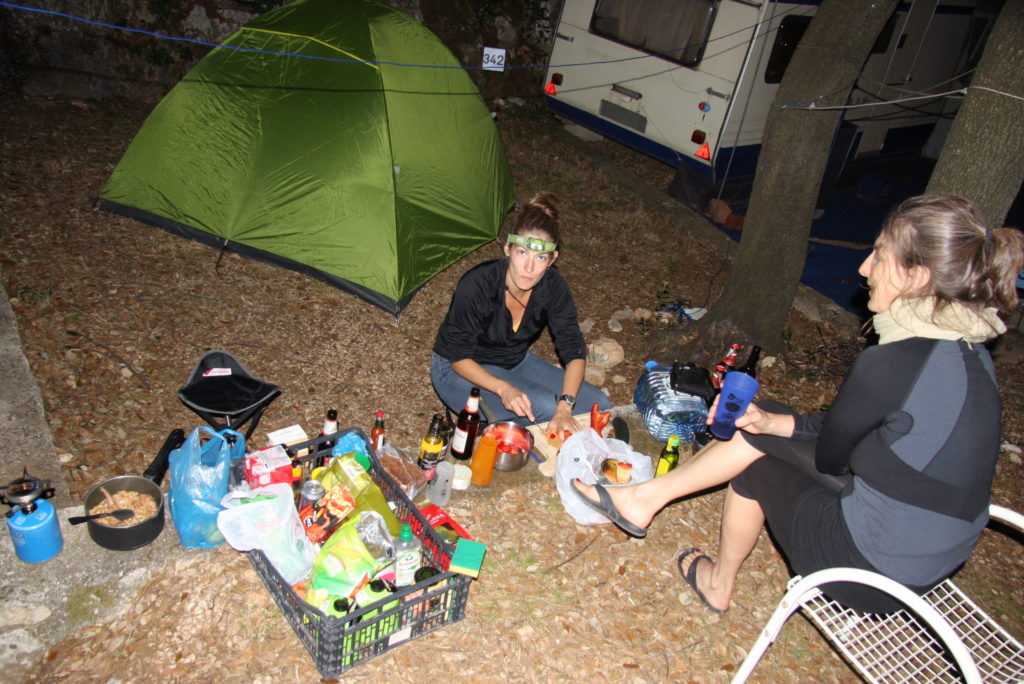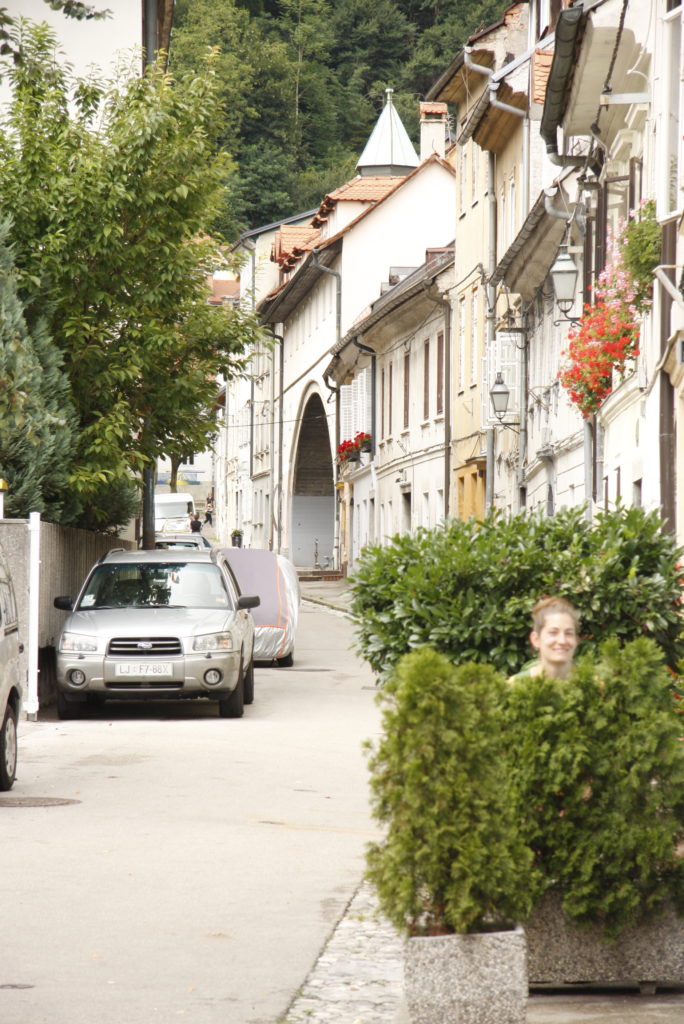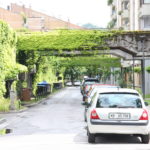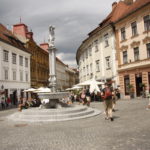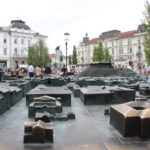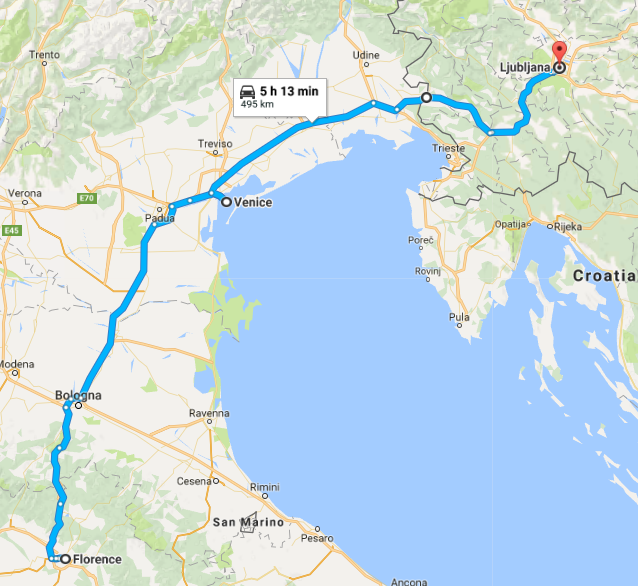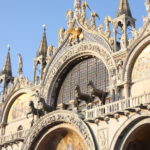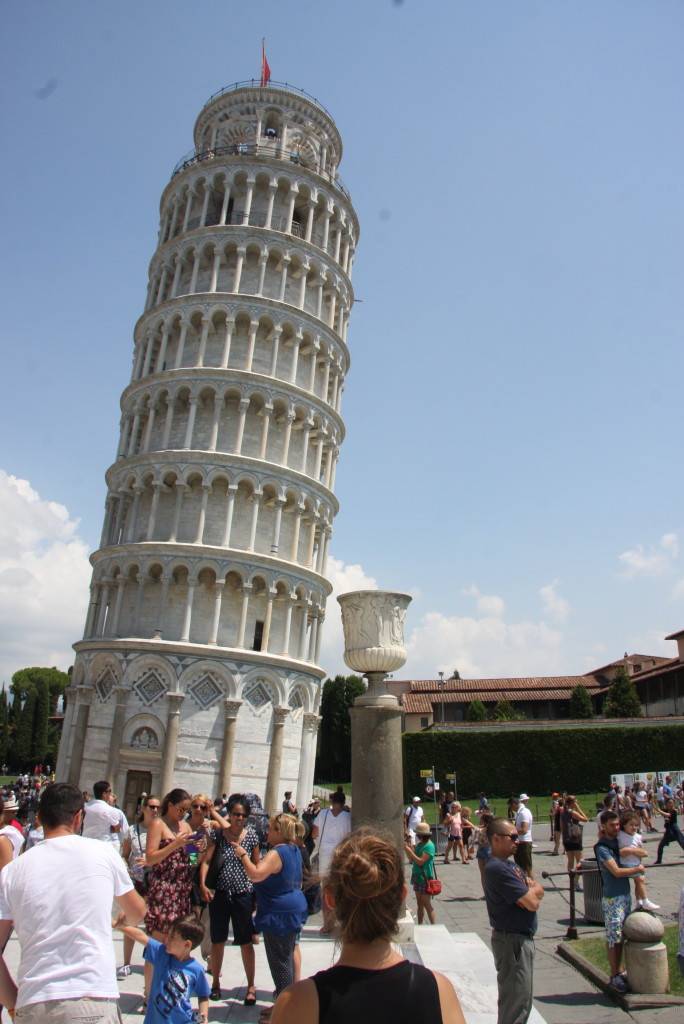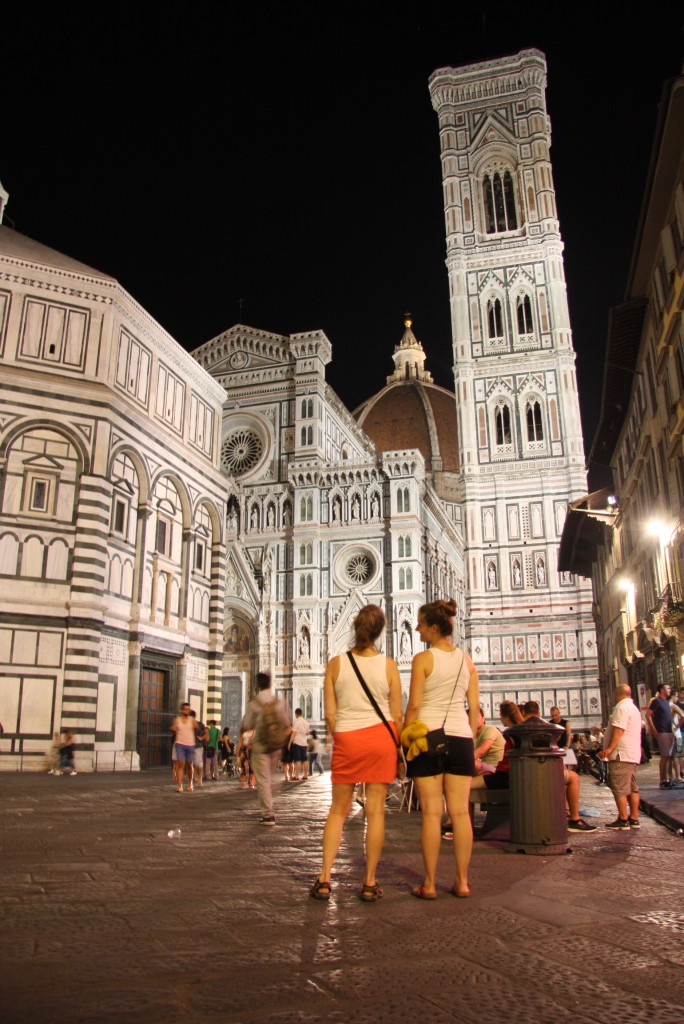- Date: 26 juillet 2017
- Départ: 13h00
- Arrivée: 20h30
- Température: soleil et nuages

 Les marins se trompent rarement. Dans la soirée la veille, le vent est tombé et le ciel s’est éclaircit. Même température le lendemain, nous nous sommes levés de bon heure sous un beau ciel bleu au son du trafic sur le boulevard d’à côté et parmi un champ de caravanes. Dire que nous avions déboursés 60 Euros pour ce site… Qu’importe, Rovinj avait la réputation d’être une belle ville et nous allions la visiter. Deux heures à déambuler dans les petites ruelles pittoresques et une église plus tard, nous étions sortis de l’endroit et sur la route.
Les marins se trompent rarement. Dans la soirée la veille, le vent est tombé et le ciel s’est éclaircit. Même température le lendemain, nous nous sommes levés de bon heure sous un beau ciel bleu au son du trafic sur le boulevard d’à côté et parmi un champ de caravanes. Dire que nous avions déboursés 60 Euros pour ce site… Qu’importe, Rovinj avait la réputation d’être une belle ville et nous allions la visiter. Deux heures à déambuler dans les petites ruelles pittoresques et une église plus tard, nous étions sortis de l’endroit et sur la route.
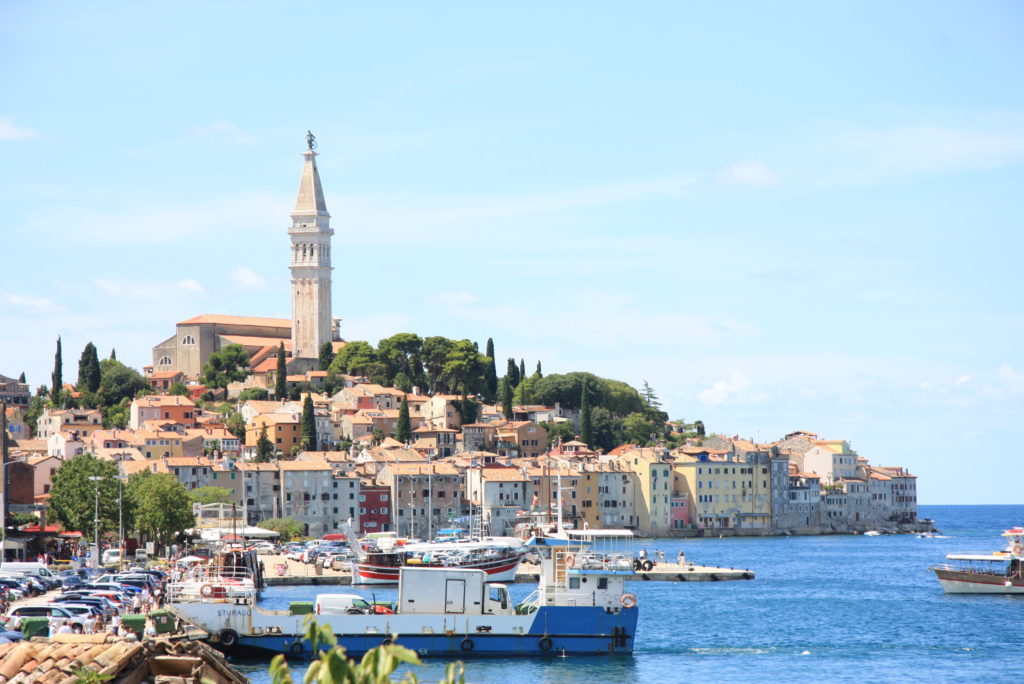
L’arrêt de la journée était Pula et son arène romaine. Nous avions pensé nous rendre jusque là la veille, mais avions choisi Rovinj pour sa ville apparemment plus attrayante. Après avoir dîné à la salade grecque dans un parc non loin de la voiture, nous sommes partis voir l’arène. Elle n’avait pas l’ampleur du Colisée de Rome, mais elle était tout de même spectaculaire et bien conservée. Tellement en fait qu’elle est encore utilisée selon sa vocation initiale sauf que là, au lieu de jeux de gladiateurs, c’était un concert de Sting qui était au menu pour la soirée. Après un tour de la ville, nous avons repris la route afin de nous rendre le plus loin possible en suivant la côte.
La route était plutôt panoramique, mais en contrepartie, nous n’avancions pas très très vite. D’ailleurs, la région venait tout juste d’être le théâtre d’une forte pluie de grêlons. Des tas de glace fondue jonchaient le côté de la route et certains arbres montraient des signes d’une bonne volée.
À mesure que nous progressions, la côte restait très développée. La plupart des plaques d’immatriculations croisées n’étaient pas croates et les trottoirs des villes étaient occupés par des hordes de familles en short/sandales. Comme de fait, la majorité des choses en Croatie sont traduites en Allemand, Italien et Anglais et parfois, c’est seulement en Allemand. Nous cherchions un camping tranquille et bucolique pour nous poser et vers 20h30, avons été forcés d’abdiquer et choisir le premier site qui passait sur la route. Il était tard et temps que l’on mette un terme à la journée.
Tous trois sommes sortis du véhicule afin de trouver un emplacement où poser la tente. Après 15 minutes de recherches, nous avons par défaut élu domicile entre trois caravanes (toutes à moins de 5 mètres). Plutôt agacé d’être encore tombé sur un spot pourri, j’ai fini par me calmer et réaliser que nous étions sur une pointe rocheuse à deux pas de la mer et devant un panorama qui valait vraiment le coup-d’oeil. Seulement, la nuit est tombée rapidement alors nous n’en avons pas profité énormément. Après avoir cuisiné les pâtes sauce-tomates au menu, Audrey et sa mère sont allées se coucher tandis que je suis resté debout jusqu’aux petites heures pour écrire.
